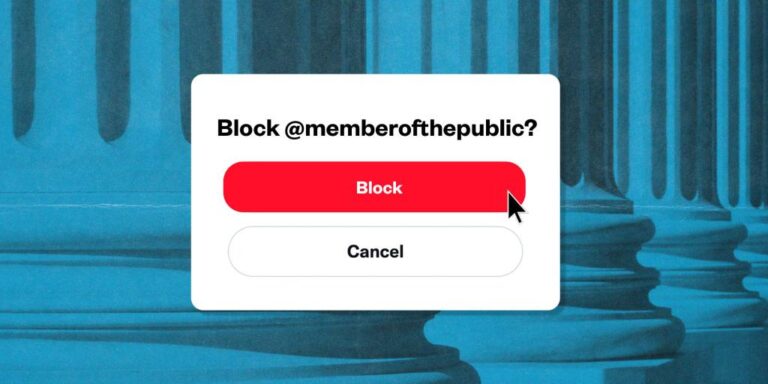In today’s digital age, managing your social media experience is more important than ever. Whether you’re dealing with unwanted comments, messages, or just looking to curate a more positive online space, knowing how to navigate your platform’s tools can make all the difference. Two of the most common options you’ll come across are blocking and muting—but what exactly sets them apart? In this post, we’ll break down the key differences between blocking and muting on social media, helping you decide which tool is right for your situation. Ready to take control of your online interactions? Let’s dive in!
Table of Contents
- Understanding the Key Differences Between Blocking and Muting
- When to Choose Blocking Over Muting for Your Mental Wellbeing
- How Muting Helps You Stay Connected Without the Drama
- Practical Tips for Managing Your Social Media Experience Effectively
- Insights and Conclusions
Understanding the Key Differences Between Blocking and Muting
When navigating social media, it’s important to grasp the distinctive functions of blocking and muting, as both tools serve different purposes in managing your online interactions. Blocking is a more definitive action—it cuts off all communication and visibility between you and another user. Once blocked, the person can’t see your profile, posts, or send you messages. This method offers a solid barrier, especially useful in situations where you want to avoid harassment or maintain strict boundaries. On the other hand, muting is a subtle way to tailor your feed without escalating tensions. When you mute someone, you won’t see their posts or stories, but they remain able to interact with and see your content. It’s an ideal choice if you want to de-clutter your timeline without making your absence obvious.
Here are some quick distinctions that highlight why you might choose one over the other:
- Visibility: Blocking removes all visibility between you and the other user, while muting simply hides their updates from your view.
- Notifications: Blocked users cannot send messages or tag you; muted users can still engage, but their activity doesn’t show up in your notifications.
- Social Dynamics: Muting preserves the social connection quietly, whereas blocking is a clear signal that contact is unwanted.
- Control: Muting can be easily reversed if you want to see someone’s posts again, whereas unblocking requires more conscious effort and can sometimes create awkwardness.
When to Choose Blocking Over Muting for Your Mental Wellbeing
Sometimes, muting just doesn’t cut it—especially when interactions with someone start to impact your mental health negatively. If you find yourself dreading notifications or feeling uneasy about someone’s posts or comments, blocking can offer a stronger boundary. Unlike muting, which simply hides the content from your feed, blocking removes the person’s ability to interact with you entirely, giving you much-needed space and control over your online environment.
Consider going for a block when you:
- Experience persistent harassment or bullying
- Want to completely disengage from toxic conversations
- Feel emotionally overwhelmed by certain accounts
- Need to reclaim your peace without having to monitor endless notifications
Remember, your mental wellbeing should always take priority. Blocking is a healthy way to create a digital safe zone where you can breathe and focus on positivity, without the noise of unwanted social media chaos.
How Muting Helps You Stay Connected Without the Drama
In the world of social media, staying connected doesn’t have to mean enduring every annoying update or heated comment. Muting offers a graceful way to curate your feed without burning bridges. Unlike blocking, which can feel confrontational, muting lets you silence someone’s posts, stories, or tweets quietly. This means you won’t see their content anymore, but they remain none the wiser, preserving your online relationship without any awkwardness.
By muting, you gain control over your digital environment and protect your peace of mind. It’s perfect for situations like:
- Friends who share too many political rants
- Family members posting spoilers or unwelcome advice
- Acquaintances who flood timelines with promotions
With this subtle feature, you can dodge the drama but still stay bonded in the social circle, giving you the freedom to engage only when you want — no notifications, no tension.
Practical Tips for Managing Your Social Media Experience Effectively
When navigating the daily influx of notifications and updates, it’s essential to have strategies that help you maintain control without feeling overwhelmed. One effective approach is to prioritize interactions by customizing your social media settings. Muting allows you to quietly tune out accounts or conversations that don’t add value or positivity to your feed without breaking the connection entirely. This option is perfect if you want to avoid drama or unwanted content but still want to check in on someone occasionally. On the other hand, blocking is a more assertive step, cutting off all access and communication, which can be useful when dealing with harassment or persistent negativity.
To optimize your social media experience, consider these practical tips:
- Assess your boundaries: Decide when an account is worth muting to reduce noise or blocking to protect your mental space.
- Use muting for temporary breaks: This is great during busy periods or if you want a little break without permanently ending relationships online.
- Keep blocks for serious cases: Abuse, spam, or persistent trolling deserve the block button—it’s there to safeguard your well-being.
- Review settings regularly: Social media dynamics change, so revisit your muted/blocked lists once in a while to ensure they still align with your goals.
By thoughtfully managing when and how you mute or block, you can create a healthier, more enjoyable online environment.
Insights and Conclusions
And there you have it—blocking and muting are both powerful tools to curate your social media experience, but knowing when and how to use each can make all the difference. Whether you want a clean break with someone or just a little breather from their posts, understanding these options puts you in control of your digital space. So next time you feel overwhelmed or just need a bit of peace, remember: you’ve got the power to shape your social feed in a way that feels right for you. Happy scrolling!

